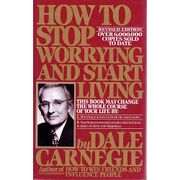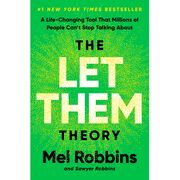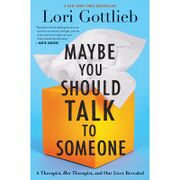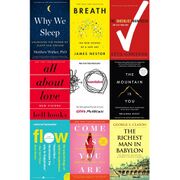Rising Strong
🍎 Healthy brain food
"When we run from struggle, we are never free."
— Brené Brown, Rising Strong (2015)
Introduction
| Rising Strong | |
|---|---|
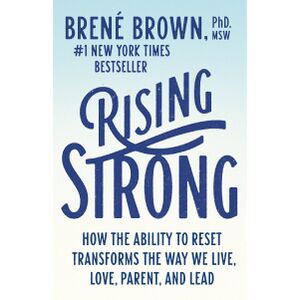 | |
| Full title | Rising Strong: How the Ability to Reset Transforms the Way We Live, Love, Parent, and Lead |
| Author | Brené Brown |
| Language | English |
| Subject | Resilience; Vulnerability; Personal development |
| Genre | Nonfiction; Self-help |
| Publisher | Spiegel & Grau |
Publication date | 25 August 2015 |
| Publication place | United States |
| Media type | Print (hardcover, paperback); e-book; audiobook |
| Pages | 336 |
| ISBN | 978-0-8129-9582-4 |
| Goodreads rating | 4.3/5 (as of 6 November 2025) |
| Website | penguinrandomhouse.com |
📘 Rising Strong is a nonfiction book by research professor Brené Brown that sets out a three-phase framework—“the reckoning, the rumble, and the revolution”—for getting back up after setbacks. First published in the United States by Spiegel & Grau on 25 August 2015, it extends Brown’s earlier work on vulnerability into a repeatable, practice-based process. The book blends qualitative social-science research with personal narratives and case stories from families, teams, and leaders to show how to own hard stories and write a braver ending. Chapters move through the three stages—reckoning with emotions, rumbling with the stories we’re telling ourselves, and living the learning as a daily practice. On release, it debuted at #1 on the Publishers Weekly Hardcover Nonfiction list for the week of 7 September 2015, selling more than 30,000 print copies that week.[1] It drew mainstream attention, including an Oprah’s Super Soul Sunday episode titled “Rising Strong” on 4 October 2015 and selection as one of the Greater Good Science Center’s Favorite Books of 2015.[2][3]
Chapter summary
This outline follows the Spiegel & Grau first-edition hardcover (2015; ISBN 978-0-8129-9582-4).[4][5]
🚀 1 – The Physics of Vulnerability. The chapter opens with “rules of engagement” that set a practical tone, beginning with a simple law: if we’re brave often enough, we will fall. Brown frames this as “physics,” not poetry, to underscore that courage and being knocked down are inseparable. She stresses that the same dynamics apply at work, at home, and in classrooms; we don’t get to subtract emotion because the setting feels professional. The map for recovery is threefold—reckoning with our feelings, rumbling with the stories we’re telling ourselves, and turning the learning into a daily revolution. Short vignettes show how ignoring emotion fuels blame, denial, or numbing, while naming it creates room for choice. The tone is plain and directive, with cues to get curious about bodily signals and thought loops. The throughline is personal accountability: own the feeling, then own the story you’re making of it. Together these pieces establish the operating system for the rest of the book and set up effects that ripple beyond the individual.
🌊 2 – Civilization Stops at the Waterline. A morning swim at Lake Travis in Texas with her husband, Steve, becomes a live demonstration of how fast the mind writes a story when a bid for connection gets a flat response. In the water she builds a private narrative—about being dismissed, about not being enough—and feels the surge of anger and shame that follows. Back on shore, they use a simple stem—“The story I’m telling myself is…”—to compare interpretations and test assumptions. Concrete details—the lake, the distance between swimmers, the clipped replies—show how few data points can trigger a sweeping storyline. The surface/depth metaphor explains why the “messy middle” of hard things can’t be skipped: on the surface we keep it civil; below the waterline churn the emotions, expectations, and fears that drive behavior. Naming the emotion is the reckoning; checking the narrative is the rumble; a truer account sets up a different ending. This shift converts threat reactivity into perspective-taking, which reduces defensiveness and opens space for repair. The scene models how small, honest conversations grounded in facts are the building blocks of rising strong.
📖 3 – Owning Our Stories. The focus moves from single episodes to the larger narratives people carry, with an invitation to write down what happened, what was felt, and what was assumed so those strands can be sorted. The tone is workshop-like: plain prompts, clear definitions, and language that favors specificity over drama. Brown distinguishes facts from confabulations and asks readers to notice where self-protection—minimizing, rationalizing, pretending—shapes the plot. The goal is integration: letting hard experiences become part of a coherent story rather than something exiled to the margins. Practically, that means telling the story to a trusted listener, reality-checking guesswork, and updating the narrative to match what’s true. Ownership converts shame into accountability and choice, which restores agency. It also aligns with the book’s arc: you can’t write a braver ending until you admit what the opening chapters contain. This [rising strong] process teaches us how to own our stories of falling down, screwing up, and facing hurt so we can integrate those stories into our lives and write daring new endings.
⚖️ 4 – The Reckoning. Everyday scenes—a hallway after a hard email, a kitchen table after a tense exchange—show how a tight jaw, racing heart, or urge to lash out signals that something real is happening inside. The move is to notice those physiological cues and name the emotion before it runs the show. Brown maps common avoidance: “chandeliering” (stuffing pain until a small poke explodes it), bouncing hurt through blame or anger, numbing with work, food, or scrolling, stockpiling until the body pushes back, and fearing you’ll get emotionally “high-centered.” Field notes show how each tactic buys short-term relief but compounds long-term costs in relationships and health. The practice is simple and repeatable: pause, breathe, identify what you feel, and get curious about how it shapes thoughts and behavior. When curiosity replaces reactivity, there’s room to choose the next step rather than offload pain onto someone else. Naming and tolerating affect reduces threat response and widens perspective, which makes wiser behavior possible. In the book’s arc, the reckoning is the on-ramp: you can’t rumble with a story you refuse to feel.
⚡ 5 – The Rumble. Borrowing Anne Lamott’s “shitty first drafts” tool from Bird by Bird, the chapter turns it into disciplined practice: write the raw, unfiltered story you’re telling yourself about what just happened, then reality-check it. On paper, that draft captures the leaps our brains make with sparse data—the villain, the motive, the plot twist—so we can see confabulations and conspiracies before they harden into certainty. A stockroom slight, a curt text, a missed invitation—each example becomes a prompt to ask for the full story rather than act on the partial one. Brown adds a conversational stem—“The story I’m telling myself is…”—to surface assumptions with teammates, partners, and kids without escalating defensiveness. The rumble is uncomfortable by design; it pushes for specificity about facts, feelings, and accountability, and it welcomes disconfirming evidence. Translating the first draft into a truer narrative reduces shame and threat while increasing empathy. Within the framework, rumbling turns reckoning into learning; ownership replaces avoidance, and new behavior becomes thinkable.
🐀 6 – Sewer Rats and Scofflaws. A work trip goes sideways: pressured into a free speaking gig, Brown arrives to find she must share a hotel room; her roommate wipes cinnamon-roll frosting onto the sofa—“It’s not our couch”—then lights a cigarette on the tiny patio. In therapy with Diana, the story widens—she tests whether people are “doing the best they can,” polls more than forty people over three weeks (from colleagues to former participants), and even canvasses a Wells Fargo teller who mentions two tours in Iraq. A pop-culture frame from Flushed Away gives language to two archetypes: the “sewer rat” who trashes norms and the “scofflaw” who mocks those who follow them. The chapter lands on a tool—Living BIG—spelling out Boundaries, Integrity, and Generosity as the conditions that make assuming positive intent workable. Boundaries stop resentment; integrity aligns actions with values; generosity asks for the most generous read that’s still true. The shift is from judgment to compassionate limits: assume effort without abandoning standards to reduce rage and clarify choices. In the arc, this is rumbling with trust and limits so the learning holds in real life. All I know is that my life is better when I assume that people are doing their best.
💔 7 – The Brave and Brokenhearted. The chapter calls a halt to running from pain and organizes a deliberate rumble across five terrains: disappointment and expectations, love and belonging, grief, forgiveness, and the difference between compassion and empathy. Field notes trace how stealth expectations harden into resentment, how heartbreak shatters the stories we live in, and how grief demands presence more than fixes. Prompts push for precision—What happened? What did I feel? What did I make up?—so untested assumptions can be named. The text returns to practice: sit with sorrow, reality-check the story, and anchor in values before acting. Forgiveness is boundary-heavy work, not a bypass of accountability, and compassion starts with self-kindness rather than indulgence. Across these topics, permission to be both brave and brokenhearted is the throughline. Turning toward hard emotion reduces shame and restores agency; in the larger arc, this deep rumble enables a different ending. We can’t rise strong when we’re on the run.
🎯 8 – Easy Mark. A personal rumble starts with a raw first draft: needing help means being a sucker—an “easy mark.” Writing that draft exposes the hidden rules behind over-helping and under-asking, then a conversation opener—“The story I’m telling myself is…”—brings those rules into the open with coworkers and family. Field notes contrast compulsive rescuing with the courage to name need and show how resentment and martyrdom fade when boundaries and reciprocity return. The chapter separates competence from invulnerability and links isolation to untested shame stories about weakness. Practical cues follow—ask clearly, receive cleanly, and separate worth from utility—so help becomes a shared practice rather than a scorecard. Reframing help as connection interrupts perfectionism and turns threat into trust-building behavior. In the framework, this rumble converts reckoning into relational change by replacing self-sufficiency myths with bounded interdependence. When you judge yourself for needing help, you judge those you are helping.
♻️ 9 – Composting Failure. The anchor metaphor is agricultural: as scraps turn into soil, mistakes and misses can be decomposed into fuel for wiser action. The rumble names the usual rot—fear, shame, perfectionism, blame, trust failures, and regret—and then works each one with concrete practices. Trust gets a durable vocabulary through BRAVING, a seven-part checklist for small behaviors that compound over time: Boundaries, Reliability, Accountability, the Vault (confidentiality), Integrity, Nonjudgment, and Generosity. Vignettes move from workplace stumbles to family missteps, showing how keeping or breaking small promises is how trust grows or erodes. A writing drill captures what happened, what was felt, and what can be repaired, then translates the learning into one or two specific commitments. The move is cognitive and social composting: take responsibility, extract lessons, and re-enter the arena with clearer agreements. In the arc, this chapter turns rumbling into design—rituals and language that make rising strong repeatable. In my research, seven elements of trust emerged as useful in both trusting others and trusting ourselves.
💃 10 – You Got to Dance with Them That Brung You. After strong reactions from colleagues and strangers—some generous, some cutting—the pull is to armor up or perform. Instead of chasing approval, the rumble turns inward to identity, shame, criticism, and nostalgia, naming how each can distort what’s true now. A small, trusted circle becomes the testing ground for first-draft stories and for clarifying which voices have earned influence. The work is concrete: use the SFD to capture assumptions, reality-check interpretations with people who practice confidentiality and nonjudgment, and decide what feedback aligns with core values. Nostalgia can lure you back to old roles or shrinking strategies; criticism is sorted into signal and noise by asking whether it’s specific, kind, and tied to shared standards. The aim is to keep showing up as a whole person rather than a curated persona, especially when stakes and opinions rise. Bringing vulnerable material into a safe, bounded space reduces shame and increases behavioral flexibility. In the arc, this cements the skills that make rising strong sustainable in public arenas. We can’t be brave in the big world without at least one small safe space to work through our fears and falls.
🔄 11 – The Revolution. The closing chapter shifts from steps to practice, tracing how small, repeatable moves—naming emotions, writing SFDs, opening with “The story I’m telling myself is…,” and keeping BRAVING-level agreements—change what happens at home, at work, and in communities. Instead of one breakthrough, change shows up in rituals: a quick debrief after conflict, a pause before replying to a hard email, a family check-in that separates facts from assumptions, a team meeting that labels what is rumble-worthy. Learnings carry forward: boundaries get clearer, integrity outranks image, and generosity becomes the default without abandoning accountability. Because the practice is social, the effects ripple; modeling curiosity over certainty and responsibility over blame invites others to do the same. The “revolution” is accumulation—new endings written often enough that they become the way of living, loving, leading, and parenting. Repeated corrective experiences update identity, so each owned and revised story makes the next brave act require less armor. In the main theme, reckoning and rumbling harden into culture—first personally, then relationally—so getting back up becomes how a life is led.
Background & reception
🖋️ Author & writing. Brown is a research professor at the University of Houston; the book grows out of her long-running studies of courage, vulnerability, shame, and empathy.[6] As a grounded-theory researcher, she developed the rising-strong method from stories gathered across settings—from Fortune 500 leaders and the military to artists, couples, teachers, and parents—and frames it as a daily practice. She introduced the project on 9 April 2015 as “a book about what it takes to get back up” and about “owning our stories of struggle.”[7] Around publication, national outlets discussed its relevance for work and leadership, including a Washington Post On Leadership Q&A and a Time interview that explored why “failure has to hurt” to produce learning.[8][9]
📈 Commercial reception. Publishers Weekly reported that Rising Strong opened at #1 on its Hardcover Nonfiction list for the week of 7 September 2015, with more than 30,000 print units sold that week.[1] The publisher lists the book as a #1 New York Times bestseller.[4]
👍 Praise. Kirkus Reviews called the book “an innovative one-two-three–punch approach to self-help and healing” and said Brown “gives readers the necessary tools to get up and try again.”[10] Spirituality & Practice praised its framing of “rising strong” as a spiritual practice that can be cultivated.[11] UC Berkeley’s Greater Good Science Center included the title on its “Favorite Books of 2015” list, highlighting its guidance for responding to shame with compassion.[3]
👎 Criticism. Writing from an evangelical perspective, The Gospel Coalition cautioned that the book’s raw language and lack of explicit Christian theology could be a stumbling block for church audiences.[12] A Guardian profile questioned elements of tone and commercialization—calling the subtitle “schmaltzy” and the register “folksy”—and noted that some media dubbed Brown a “self-help queen,” a label she rejects.[13]
🌍 Impact & adoption. Oprah’s Super Soul Sunday devoted an episode titled “Rising Strong” to the book on 4 October 2015, amplifying its reach beyond the book world.[2] Brown’s organization publishes a free “Rising Strong Reading Guide” for book clubs, teams, and individuals, supporting group study and workplace discussions.[14] Related training built on Brown’s research—such as The Daring Way—offers facilitator-led workshops applying her courage-building and shame-resilience tools in clinical, educational, and organizational settings.[15] Business media also discussed its implications for leadership culture; for example, Fast Company argued for learning from failure in a 3 August 2015 feature tied to the book’s release.[16]
Related content & more
YouTube videos
CapSach articles
Enjoyed this page?
📚If this page Rising Strong inspired or helped you today, a small coffee helps us keep creating and sharing more. Your support truly matters.👏
References
- ↑ 1.0 1.1 "This Week's Bestsellers: September 7, 2015". Publishers Weekly. 4 September 2015. Retrieved 6 November 2025.
- ↑ 2.0 2.1 "Full Episode: Rising Strong with Brené Brown". Oprah.com. Oprah Winfrey Network. 4 October 2015. Retrieved 6 November 2025.
- ↑ 3.0 3.1 "Our Favorite Books of 2015". Greater Good Science Center. University of California, Berkeley. 15 December 2015. Retrieved 6 November 2025.
- ↑ 4.0 4.1 "Rising Strong". Penguin Random House. Penguin Random House. Retrieved 6 November 2025.
- ↑ "Rising strong". WorldCat. OCLC. Retrieved 6 November 2025.
- ↑ "Brené Brown". Penguin Random House. Penguin Random House. Retrieved 6 November 2025.
- ↑ "I Love Big Book News and I Cannot Lie!". brenebrown.com. Brené Brown, LLC. 9 April 2015. Retrieved 6 November 2025.
- ↑ "Brené Brown's guidance for the negative thinker in all of us". The Washington Post. 20 August 2015. Retrieved 6 November 2025.
- ↑ Aneja, Arpita; Belinda Luscombe (10 September 2015). "Brené Brown: "We're spit-shining failure."". Time. Retrieved 6 November 2025.
- ↑ "Rising Strong". Kirkus Reviews. Kirkus Media. 3 June 2015. Retrieved 6 November 2025.
- ↑ "Rising Strong — Book Review". Spirituality & Practice. Spirituality & Practice. Retrieved 6 November 2025.
- ↑ Nelson, Heather Davis (9 November 2015). "Brené Brown on Rising Strong". The Gospel Coalition. Retrieved 6 November 2025.
- ↑ Cadwalladr, Carole (22 November 2015). "Brené Brown: 'People will find a million reasons to tear your work down'". The Guardian. Retrieved 6 November 2025.
- ↑ "Rising Strong Reading Guide". brenebrown.com. Brené Brown, LLC. Retrieved 6 November 2025.
- ↑ "The Daring Way". brenebrown.com. Brené Brown, LLC. Retrieved 6 November 2025.
- ↑ Rankin Naasel, Kenrya (3 August 2015). "Brené Brown Wants You To Wallow In Your Failure". Fast Company. Retrieved 6 November 2025.

